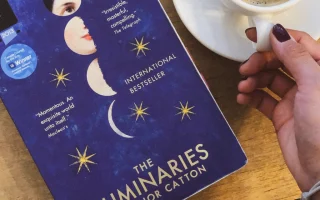lettersforvivian.org – Salman Rushdie, an author renowned for his rich narrative style and imaginative storytelling, has been a pivotal figure in the genre of magical realism. His works seamlessly blend the fantastical with the mundane, creating a unique tapestry that captures the complexities of identity, culture, and politics. In this article, we explore the elements of magical realism in Rushdie’s writing and examine how he uses this literary technique to address profound themes.
Defining Magical Realism
Magical realism is a genre where magical elements are integrated into a realistic environment, often treated as a natural part of the world. This literary style allows authors to explore deeper truths and challenge conventional perceptions of reality. Salman Rushdie utilizes magical realism to enrich his narratives and provide insights into the human experience that are both universal and culturally specific.
Midnight’s Children: A Landmark of Magical Realism
Rushdie’s seminal work, “Midnight’s Children,” is a quintessential example of magical realism. The novel, which won the Booker Prize in 1981, follows the life of Saleem Sinai, a boy born at the exact moment of India’s independence. Saleem’s telepathic abilities and his connection with other children born in that hour symbolize the nation’s diverse and tumultuous journey. Through magical realism, Rushdie illustrates the intertwined destinies of individual lives and historical events, providing a narrative that is both fantastical and profoundly real.
Blending the Mythical with the Real
In Rushdie’s novels, mythical elements often coexist with historical and political realities. This blending serves to highlight the absurdities and contradictions inherent in real-world events. For example, in “The Satanic Verses,” Rushdie explores themes of identity and belief through a narrative that interweaves religious allegory with contemporary issues. His use of magical realism allows for a nuanced exploration of cultural hybridity and the immigrant experience.
Themes of Identity and Transformation
A recurring theme in Rushdie’s work is the fluidity of identity. Characters often undergo magical transformations that reflect their internal struggles and external circumstances. This motif underscores the idea that personal and cultural identities are not fixed but are continually evolving. Through magical realism, Rushdie challenges readers to reconsider the nature of identity and the forces that shape it.
The Impact of Rushdie’s Magical Realism
Salman Rushdie’s contribution to magical realism has had a lasting impact on literature. His ability to weave the fantastical into the fabric of everyday life has inspired a generation of writers and opened new avenues for storytelling. Rushdie’s work transcends cultural and linguistic boundaries, offering a narrative style that is both innovative and deeply resonant.
Conclusion
In conclusion, Salman Rushdie’s use of magical realism has established him as a master storyteller and a pivotal figure in contemporary literature. By blending the magical with the real, Rushdie creates narratives that explore complex themes of identity, culture, and politics, inviting readers to engage with the world in new and imaginative ways. His influence on the genre continues to inspire and challenge, ensuring his place as a literary icon.



